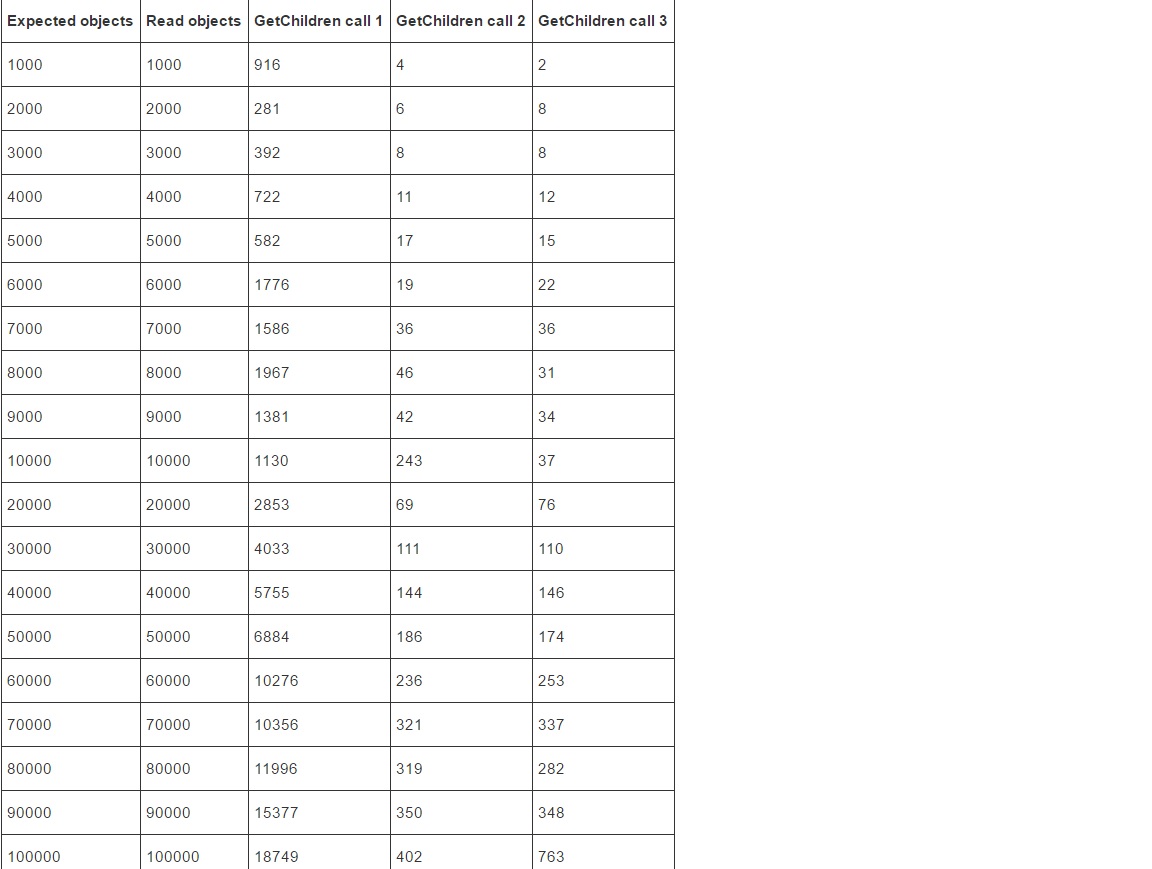Lots of pages below the same parent and how it effects load time
I guess everybody knows that having to many child pages under the same parent is bad for performance. But exactly how bad and where is the limit.
Since it's now so easy to create your own object and save it to Episerver it can be an option instead of using the DDS. So I decided to do a quick hack to see what type of performance I got on med development virtual machine when having lots of pages below the same parent.
If you aren't aware that you can easily store your own objects in Episerver and manipulate them in the same way you would do with pages read more about it in the docs.
Below is a screen dump of my test after a fresh IIS reset. Call times are in milliseconds.


Hmm yeah. I can't really see the purpose of the DDS. Probably better to spend that development time at Episerver on storing generic content better/easier using the normal IContentRepository.
Wonder what the load time would be in an alternative like entity framework? Personally I feel the added extras you get in the UI with IContent simplify feature development.
I guess if you have more than 10,000 entities it becomes noticeable. This is where better management in hierarchies would improve performance. If that's not possible you could always write some "warmup"scheduled job or initialisation to make the Get Children requests so the objects are already cached.